
Heavy rumbling sounds fill the afternoon sky above the Netherlands. The drone rolls on for miles through the afternoon skies. The sound unnerves cattle and farmers on the fields and stops their work to look up to see what is coming. Citizens of the big town on the river Meuse stop their daily routine and look up as well, wondering where these formations of planes will head to. Ninety Heinkels 111 opened their bomb hatches when they had the city in their sights, waiting for the signal to release their load of devastation and disaster.
May 1940 – Fall Gelb
Fall Gelb started on the 10th of may 1940. The plan was to overtake the Netherlands in two days and lure the allied forces from Belgium toward the north into the Netherlands, clearing the path for the armored columns which would invade Belgium and France. Entering the south of Belgium, straight through the Ardennes.
The manoeuvre was to be executed in a newly devised attack form, a sickle manoeuvre invented by Field Marshal Erich von Manstein.In the early morning of the 10th of May an armored train crossed the Dutch border, immediately followed by a train packed with Wehrmacht soldiers. They entered like a bunch of tourists on their way to the beaches. Behind enemy lines the soldiers embarked to get hold of their designated target.
Fighter planes attacked the Dutch air force and other key objectives. German Fallschirmjäger, paratroopers, dropped at bridges and airfields to capture strategic points and hold them until relieved by the armored columns of the Wehrmacht.The Dutch army was not ready for this kind of war, its men not trained as the Wehrmacht was and their weapons beyond comparison to the modern weaponry of their German counterpart.
As planned it would take two days to overtake the Netherlands and things went well for the German forces, until they came across the Grebben line near Utrecht (a wooded and hilly part of the Netherlands prepared with strong points and trenches, or the Afsluitdijk (this enclosure dam, is a 32 km long dam between the North sea and the IJsselmeer). On these two places above, and some others throughout the country the Dutch managed to put up fierce resistance, and were able to slow the Wehrmacht down.
Attacking Rotterdam

The Fallschirmjäger took the Moerdijk bridge unharmed. Dropped south of the river Meuse, near Rotterdam to take the Waalhaven airfield and take the city.
They entered Rotterdam on the south side of the city. Rotterdam is divided by the river Meuse; it has a width of approximately 350 meters and is fast flowing.
Seaplanes landed on the Meuse to get 120 soldiers as close as possible to their target.
Dutch Marines prepared strong points and barricades on the riverside. Although their weaponry was outdated, they knew how to use them to the fullest of their limit. With well placed shots the marksmen kept the Fallschirmjäger at bay. The Fallschirmjägers casualties were mounting up in Rotterdam. Resistance was so fierce that the Fallschirmjägers called the Dutch Marines, Black Devils.

The White House

Het witte huis, or in English “The White House”, was built in 1898 and with its 43 meters in height it was the tallest building in Europe for years. The Dutch Marines took up defensive positions near this building and caused many German casualties.
While I was taking pictures of the White House and the bullet holes that are still visible, the owner came out for a chat. He told me that ten years ago he plastered the building to camouflage the damage which is still visible after 70 years. Unfortunately for him, as time passed by, the signs of war returned and were visible again.

The German Ultimatum
For the German High Command things in the Netherlands didn’t go as planned. The need to set their forces free of combat with the Dutch was high. The units were desperately needed in the south of the Netherlands to participate in the attack on Belgium and France.
Therefore an ultimatum was given to the Dutch on the 14th of May 1940, 2 days behind schedule. The message was: “Surrender or feel the consequences”.
Ninety Heinkel bombers of Kampfgeschwader 54 (combat group) flew in tight formation over the city of Rotterdam. The bombing only lasted 15 minutes but the outcome was devastating. 97.000 kilo’s of bombs were dropped right in the old city center of Rotterdam. More than 800 citizens lost their lives in the attack, 24.000 houses were destroyed, 70 schools, 21 churches, 1200 company buildings, 4 hospitals and more than 80.000 people lost a roof above their heads.
The city burned for days on end, even for months in some areas. A storm fuelled the fire even more in the days after the bombing.
My grandma told me that in the evening she could see Rotterdam burning, the sky turned red at night. She lived in Gouda, more than 30 kilometers away from Rotterdam.
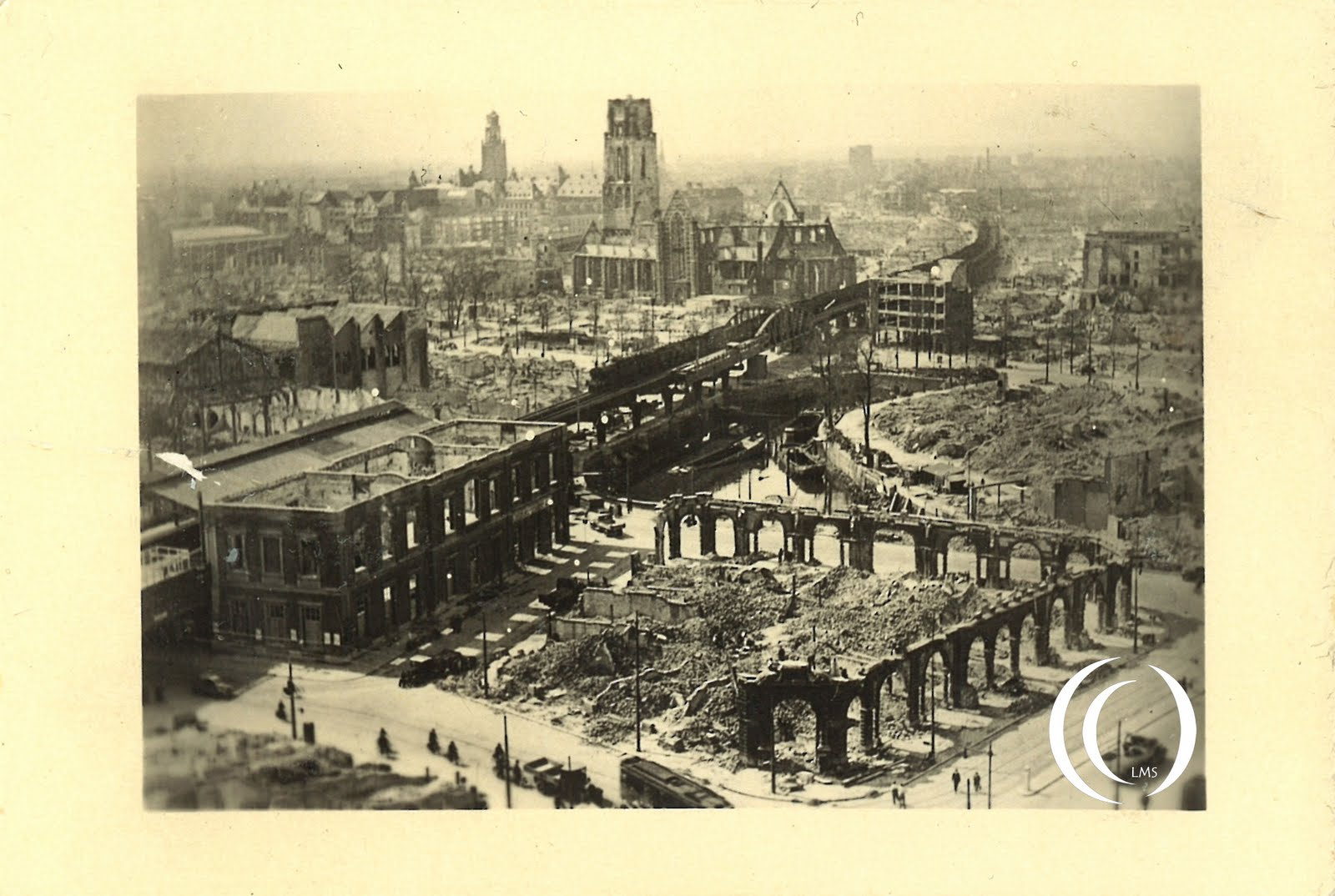
Dutch Surrender
The day after the bombardment, on the 15th of May the German high command threatened to bomb other large cities as well, starting with the city of Utrecht. The Dutch decided to capitulate shortly after.
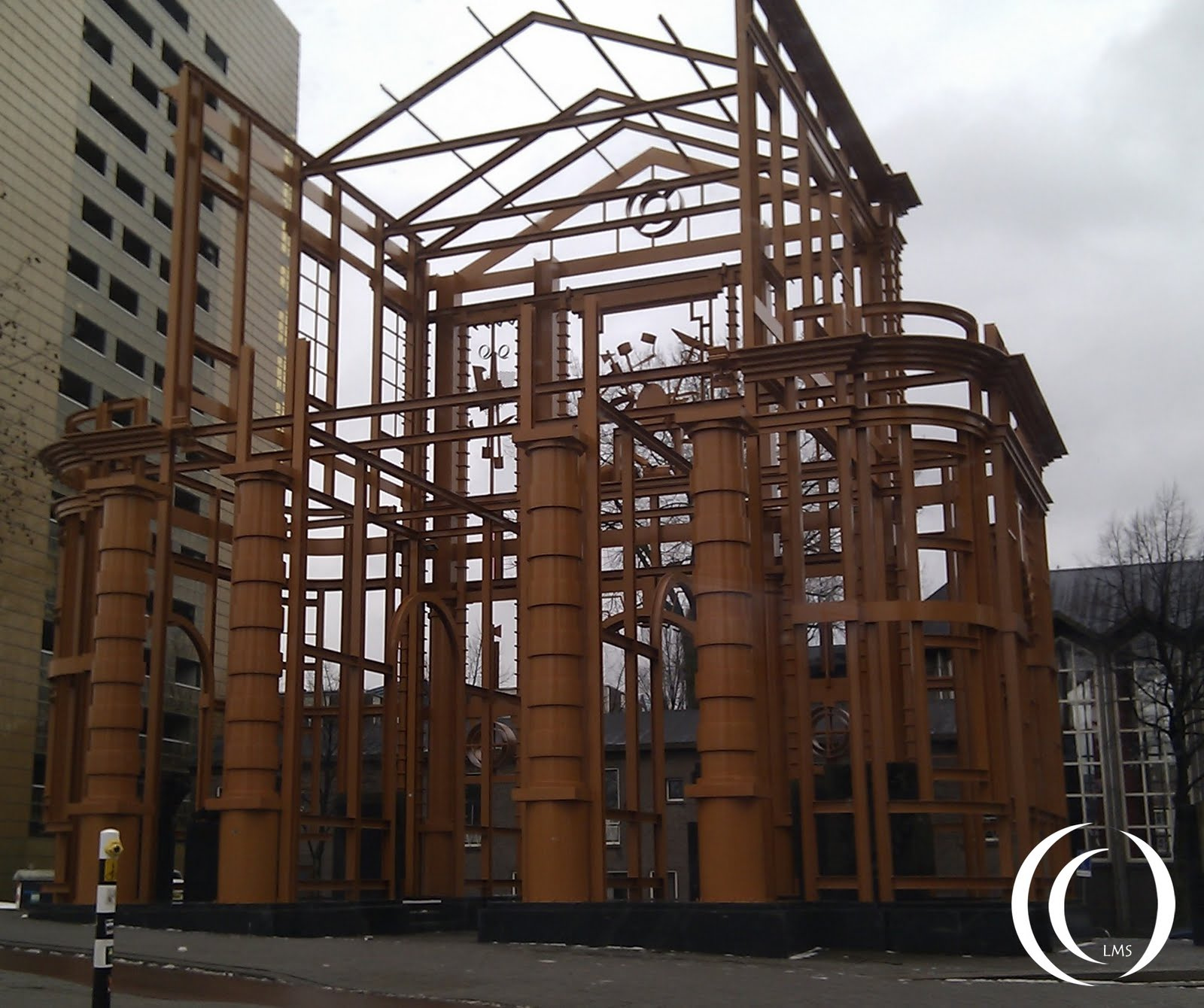
My aunt lived in the countryside. Just before the outbreak of the war her mom sent her to relatives in Rotterdam. Nothing will happen to you in the big city, she told her child, you will be safe over there.
In the aftermath of the bombardment while the city was still ablaze, the citizens of Rotterdam experienced a constant downpour of ash. Pushed up by the heat of the inferno the flakes landed in the surrounding of the fire source, some even got as far as Gouda, 30 kilometers away. The older citizens today still refer to this bizarre phenomenon as “Black Snow”.
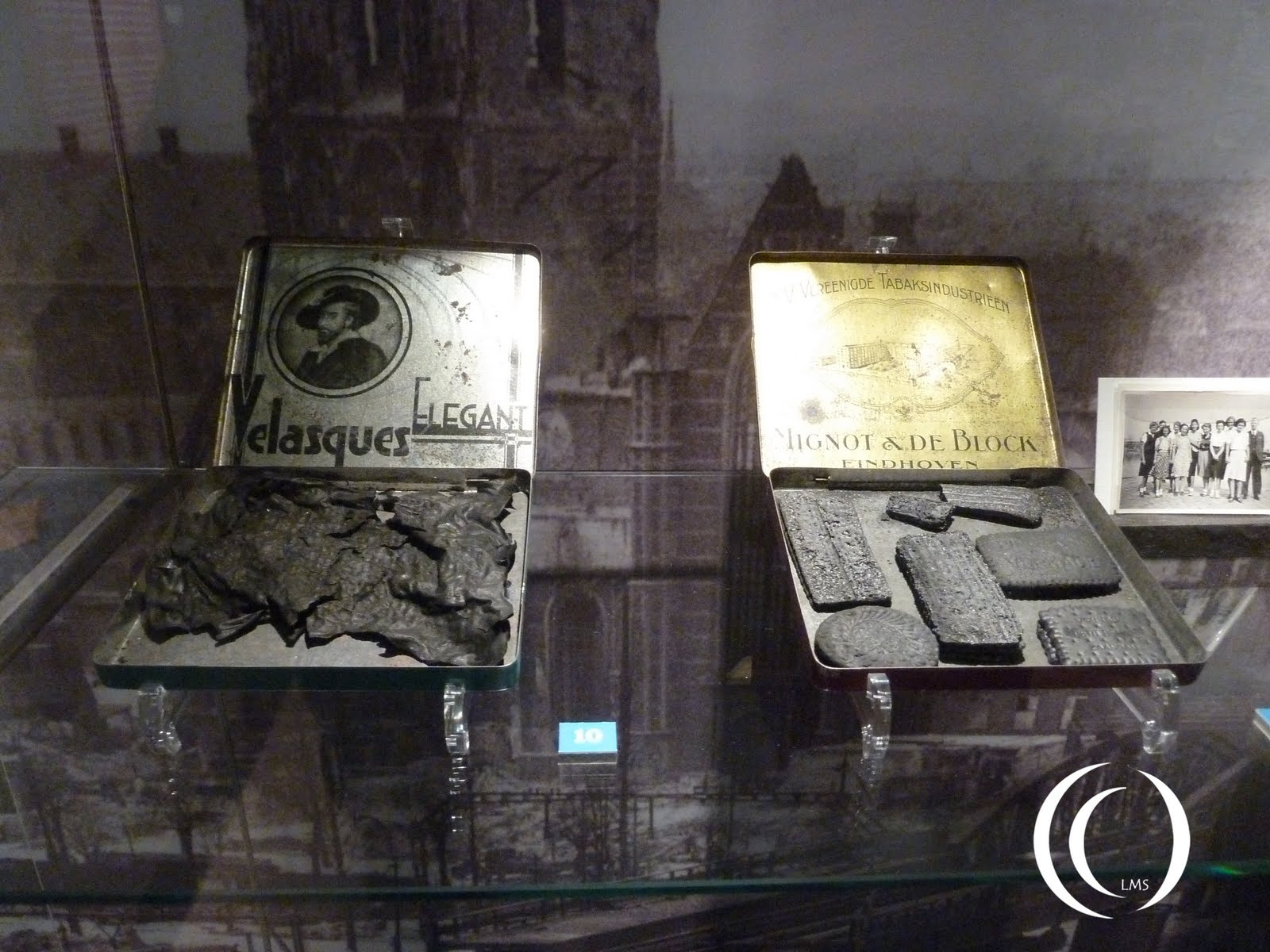
A Last Stand
After the Netherlands surrendered the fighting didn’t stop at once. The French army had come to the aid of the Dutch and entered the country through the southern side. Fighting here continued until the 26th of May 1940, until finally Dutch marines and French and English soldiers were evacuated out of Zeeland, a province situated at the seaside in the Netherlands.
You can imagine there is more to this story. There is a story about calling off the bombardment with a red flare, not seen by all bombers. And there is much more on the attack on the Netherlands that can be told.
The Fire Line Today
The local government of Rotterdam decided in 2006 to place special lights to mark the Fire Line, and memorialize the bombing of Rotterdam. The Fire Line follows the perimeter of the burned city centre.
On 14 may 2010 the Fire Line memorial was completed, exactly 70 years after the bombing took place. It is marked by lights placed in the pedestrian’s walkways. The lights show “the burning city”, a monument of a man with his hands raised towards the sky, and a bomber in the sky. The 128 lights, placed over a length of 12 kilometres, come to life at night on special occasions.

Together with the lights they placed “firestones” along the fire line throughout the city. These stones give additional information about the bombing of Rotterdam.
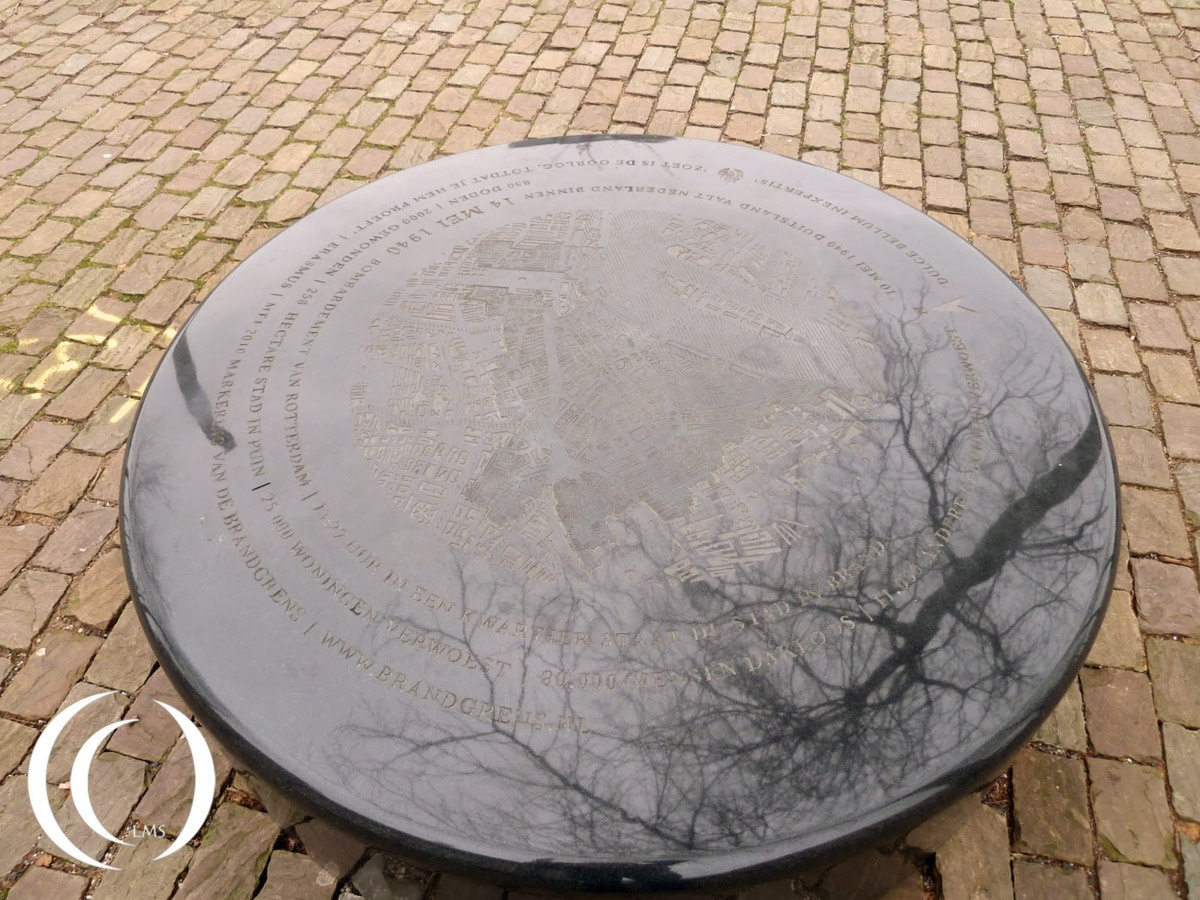
The Fire Line Route
If you are interested you can take a walk along the fire line. It is a 12 km route, but it is divided in 4 parts if you want a shorter trip. The route and information can be found here:
Walking the fire line in Rotterdam
Unfortunately the information is only available in Dutch.

On the south part of the Fire Line, on the island, you see a different colour line. This is the location of friendly fire. In the defence of Rotterdam the Dutch Air Force, together with the Royal Air Force, attacked the Noorder-island and the bridges over the Meuse. They missed the bridges, but manage to hit the island on both outer ends
Statue of Zadkine, The Destroyed city
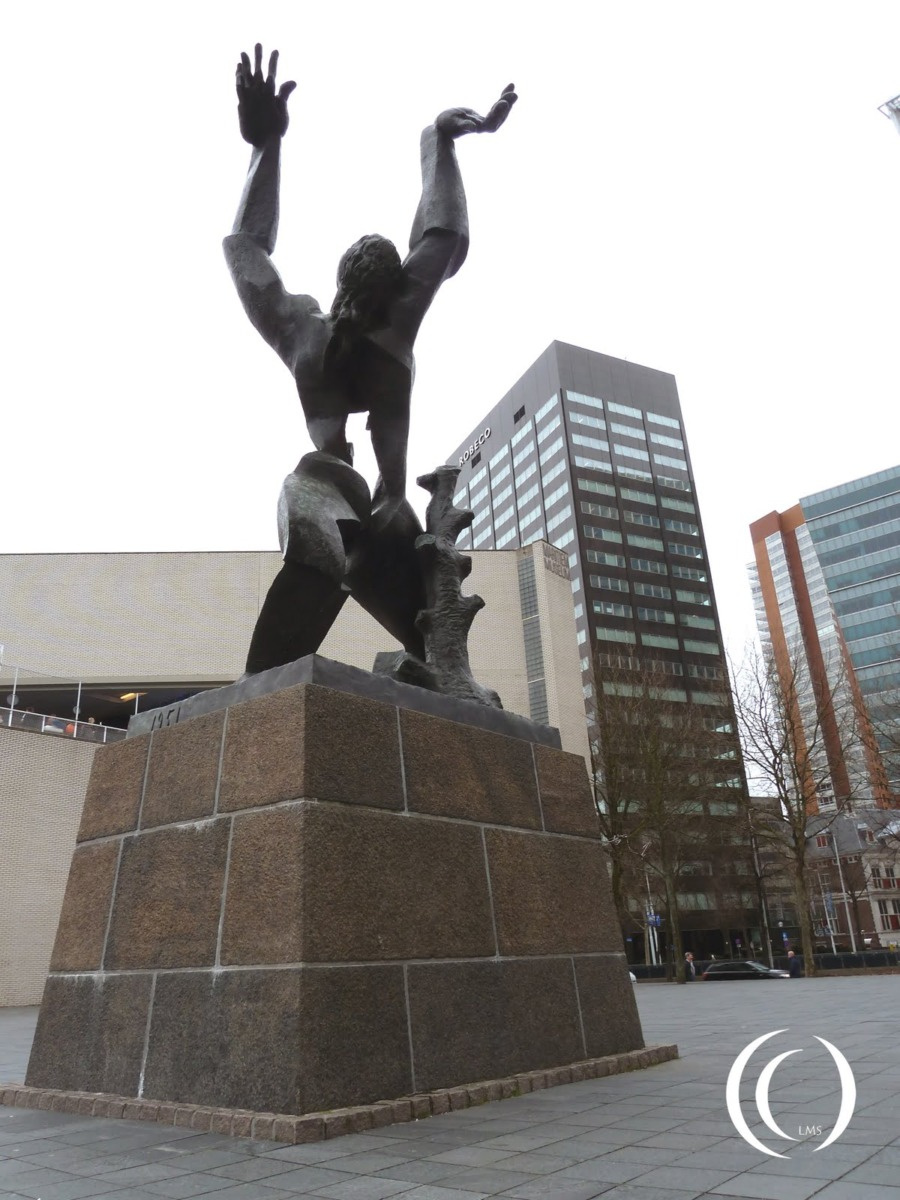
Zadkine is of Russian / Scottish origin. After attending art school in London he moved to Paris. He served as a stretcher bearer in the French Army during World War One and was wounded in action. In World War Two he was in America. His best known sculpture is “The destroyed city”. It represents a man without a heart, which of course is a metaphor for Rotterdam after the Blitz which lost its city center. An image of his sculpture is used in the lamps on the Fire Line throughout Rotterdam.
From Dust and Ash
Rotterdam is one of the few Dutch cities without an old city center. Due to the war all but a few buildings in its heart turned into rubble, and the City lost most of it’s historical buildings.
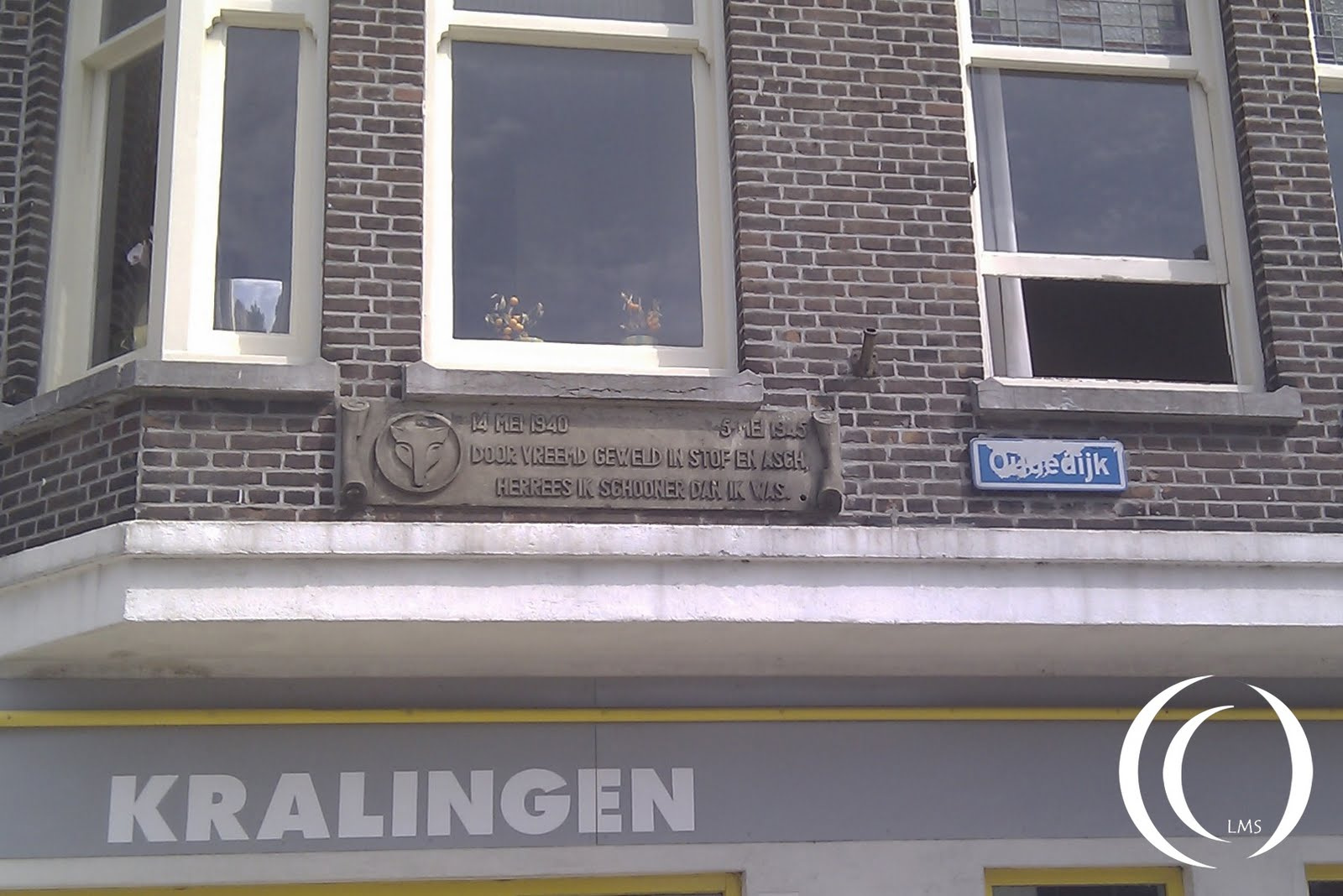
The writing on this building;
14 May 1940 – 5 May 1945
Through foreign violence in dust and ash. I arose more beautiful than I ever was.